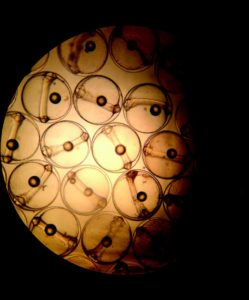
Fertilized flounder eggs
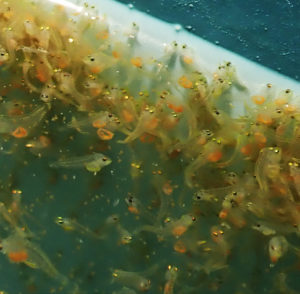
Flounder fry at 30 days

Flounder fingerlings in tank
This article is from our April/May 2022 issue of CURRENTS. You can access that issue by clicking here.
By Shane Bonnot
Southern Flounder Profile
Flounder, Paralichthys lethostigma (meaning parallel fish that forgot its spots), are one of the more peculiar fish native to the Eastern and Gulf Coasts of the United States. As juveniles and adults, they can survive in bodies of water ranging from freshwater rivers and lakes to bays and offshore.
That ability to tolerate varying salinities has allowed them to be widely distributed and highly abundant throughout our coastlines, particularly during seasonal spawning migrations. Their range begins in northern Mexico and extends all the way to through the Albemarle Sound in North Carolina, with a slight absence of presence around the tip of Florida. This wide distribution, coupled with their fighting ability and quality of flesh, make them one of the most prized catches among coastal anglers.
While they spend most of the year inshore feeding on invertebrates and smaller fish, adult Southern Flounder migrate to offshore waters each year during the late fall and early winter to depths of over 100 feet to spawn (some flounder have been found at depths greater than 350 feet), releasing on average 45,000 eggs per pound of body weight.
After the eggs are fertilized in the water column, they float to the surface and, depending on the water temperature, will hatch after an approximate 48-hour incubation period. A colder incubation temperature would equate to a longer incubation. After hatching, the larvae (measuring ~0.1 inches), will feed off their yolk sac for nearly a week, during which time the young fish develop their eyes located on opposite sides of the head. The fish will begin feeding on prey items after the mouth parts and digestive tract have formed, and for the most part, they look like a “normal” fish larvae at this point of their life.
Over the next approximately 30-40 days (again, depending on water temperature), something truly remarkable happens. Losing their aura of ordinary larval fish, southern flounder will undergo a metamorphic process in which the skull bones bend and shift positions as the right eye migrates to the left side of the head. During this process the fish will swim at a slight angle, and pigmentation on the left side (top side) of their body begins to develop.
Once the right eye is in its final resting position, the fish settles onto the right side of its body and becomes a true flatfish for the remainder of its life (interestingly, a small percentage of Southern Flounder larvae undergo left eye migration, which makes one wonder if eye dominance plays a role in metamorphosis). It is just after metamorphosis when the flounder can tolerate variable water conditions, allowing them to thrive in bays and estuaries as they migrate from offshore.
Imagine the energy demand required and resulting stress for an eyeball to move across a head, shifting skull bones in the process. Everything has to be in sync to pull off that feat. Unfortunately for flounder there are factors outside of their control that highly influence successful metamorphosis. One of the most important abiotic factors that drives flounder development in offshore waters is temperature. In the Gulf of Mexico, young Southern Flounder larvae thrive at 62-65°F and can tolerate temperatures ranging from 59-73°F.
After the flounder complete metamorphosis, that tolerance increases dramatically, but during the first few weeks of a flounder’s life it is absolutely critical that water temperatures remain stable in the upper 60s. Winter water temperatures above that narrow tolerance have devastating effects on Southern Flounder larvae survivability, and subsequently recruitment into the bays the following spring.

New Flounder Larviculture Building

Large trailer tanks for transporting fry and fingerlings to release points in bays
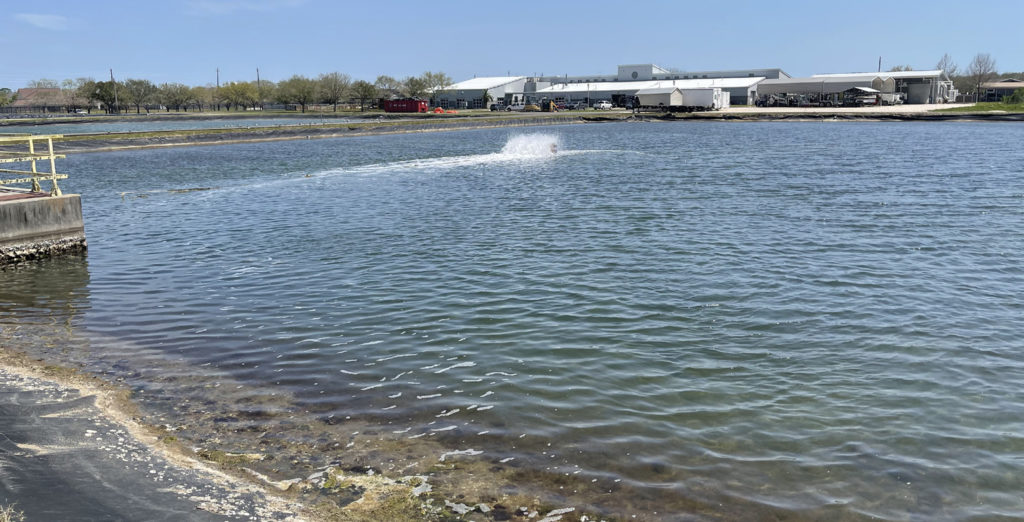
A one-acre rearing pond for growing out red drum and spotted seatrout
RISK OF MASCULINIZATION
Because of sexually dimorphic growth, Southern Flounder fisheries are dependent upon larger females. Female Southern Flounder are sexually mature before two years of age (roughly 15-17 inches in length) and can live 7 to 8 years. Due to their relatively short life span, approximately five-year classes of female Southern Flounder contribute to the spawning biomass at a given time. Male flounder are even shorter-lived, topping out at just 3 years of age, and while some can reach 17 inches in length, they rarely reach lengths in excess of 14 inches. The takeaway message – repeated warm winter water temperatures not only decrease survivability of larvae; they also skew the sex ratios to a higher proportion of the shorter-lived males, most of which never enter the fishery.
Historically, the stock has been able to recover from back-to-back warm winters, but a third or fourth consecutive warm winter coupled with consistent harvest pressure has far-reaching implications on the fishery. Continue the pattern for decades and you will begin to hear the following terms to describe the state of the fishery: record lows, repeated recruitment failures, or overfished and undergoing overfishing.
How do states manage a fishery that seems to have more questions than answers? What management options are being explored to combat the troubling trends in the Southern Flounder fishery? Well for starters, Texas and Alabama have full closed seasons to allow adult fish to migrate offshore to spawn, and it appears that Louisiana is now considering adopting the same strategy. Another similarity between Alabama and Texas are efforts to stock Southern Flounder back into coastal waters.
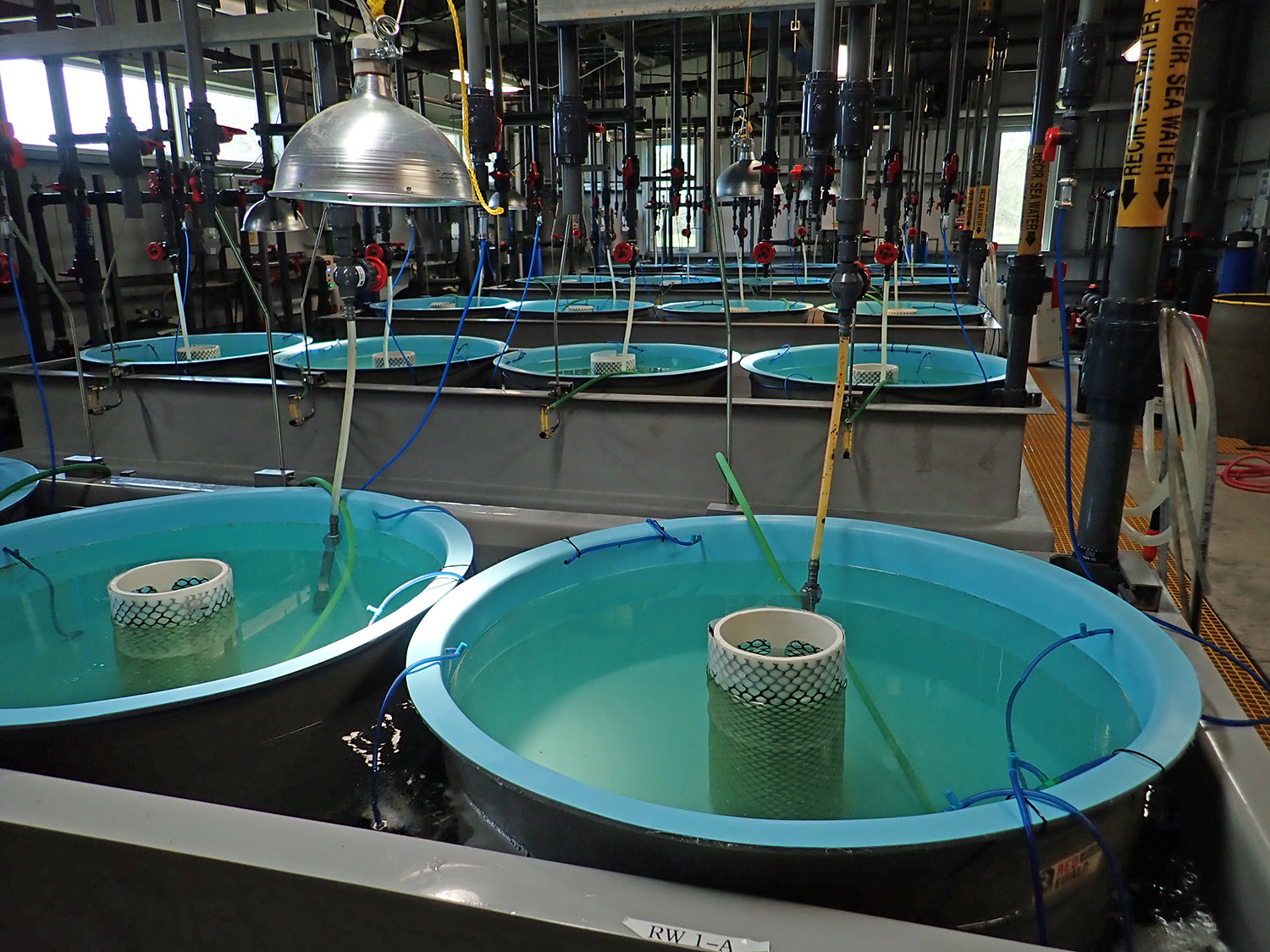
Incubation tanks in Larviculture Room
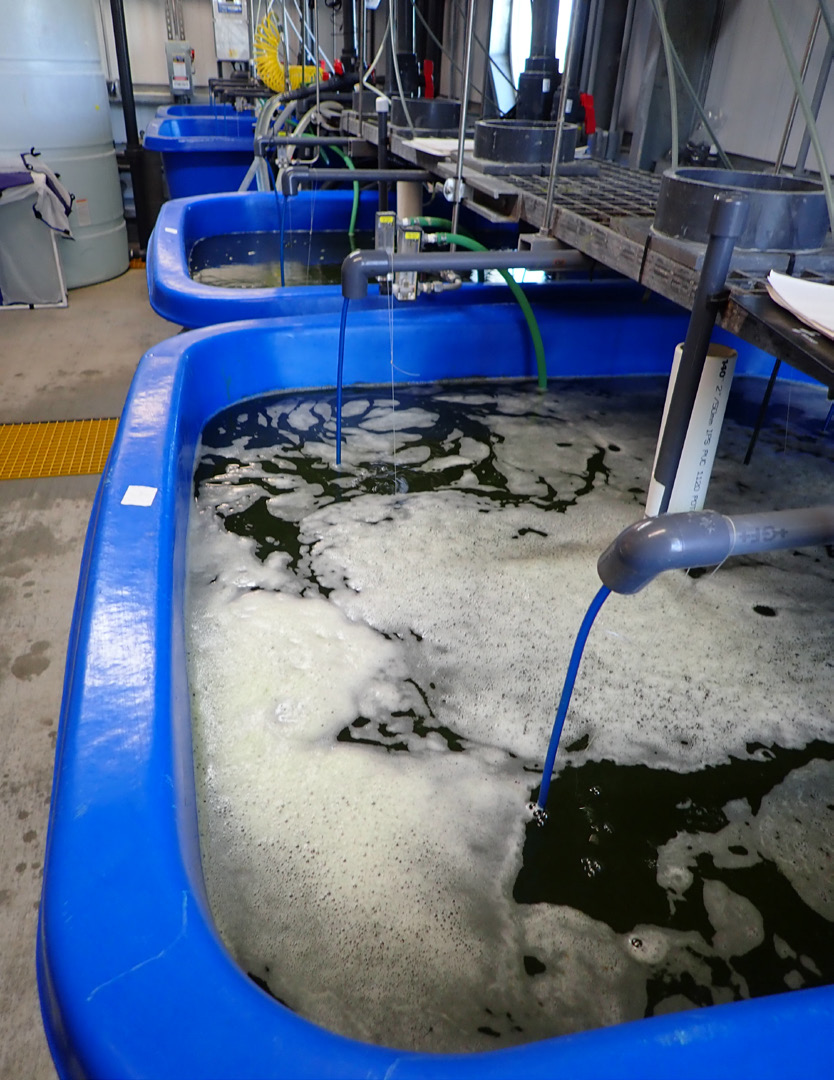
Rotifer Culture tanks; microscopic food for flounder fry
Photos courtesy of Sam Caldwell (Olympus TG-5) and Texas Parks and Wildlife.
Persistence Pays Off
Hatchery staff at the CCA Marine Development Center (MDC) in Corpus Christi and Sea Center Texas (SCT) in Lake Jackson have been working tirelessly to improve Southern Flounder larvae culture techniques and researching effects of light color on pigmentation, daylight hours effects on metamorphosis, and changing sea salt suppliers to analyze effects on larvae development.
If you aren’t learning, you aren’t growing, and the philosophy of Fisheries Enhancement staff has always been to never settle with mediocrity. Well, their efforts, willingness to try new things, and sticktoitiveness are beginning to pay huge dividends as they release post-metamorphic Southern Flounder fingerlings into Texas bays.
Thus far in 2022, hatchery staff have released 44,457 flounder into Galveston Bay and 23,989 flounder into Aransas Bay. As a former hatchery employee myself, I can’t begin to express how proud I am of the hatchery teams for their accomplishments. They continue to show why they are considered the leaders in the world of fisheries/stock enhancement and their “Make It Happen” attitude serves as a lesson for all of us to keep striving for our goals.





